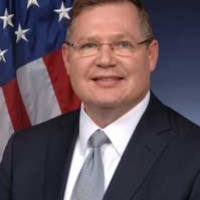May072015
Posted at 4:33 PM
Post by Michael F Molnar
The power and performance of the computer chip have improved like clockwork for half a century, as the number of transistors squeezed on a slice of silicon has doubled about every two years. Thanks to the U.S.-led semiconductor industry’s almost formulaic progress, innovation has flourished for decades, enabling a steady stream of ever-more-powerful electronic products and capabilities.
But this reliable rate of progress—set in motion by the 1965 prediction known as Moore’s Law—may be nearing its end. With the number of devices on a chip running well into the billions, the semiconductor industry is pushing up against fundamental physical limits.
Up ahead lies a technology transition where market leadership will be up for grabs. New rounds of innovation will be needed to blaze another trail, one that leads to a succession of even more powerful information technologies, themselves sprouting new industries.
Where these industries take root is a matter of great economic importance.
The SemiSynBio Consortium, one of 16 new partnerships announced today, launched with funding from the National Institute of Standards and Technology (NIST), is a new U.S. entrant in this high-stakes competition. Led by the non-profit Semiconductor Research Corporation, SemiSynBio will map a strategic course for research aimed at new hybrid technologies for collecting, sharing, analyzing and storing information.
The consortium’s industry, university and federal-laboratory partners intend to build on advances in the control of biological processes, DNA synthesis, nano-manufacturing and design automation. Their quest: novel technologies that will outperform today’s best silicon-based systems and seed the U.S. economy with entrepreneurial opportunities for start-ups and existing businesses to seize.
SemiSyn’s quest is just one example of the next-generation technologies pursued by the partnerships that just received competitively-awarded grants from NIST’s young Advanced Manufacturing Technology Consortia program. These awards, totaling $7.8 million, support industry-driven consortia in developing research plans and charting collaborative actions to solve high-priority technology challenges.
Overcoming these challenges will accelerate the growth of advanced manufacturing in the United States.
Thirteen of the funded projects will launch new consortia. All will undertake collaborative efforts to identify, prioritize and align research and development in targeted technology areas. These roadmaps will be platforms from which to mount pre-competitive R&D efforts that will reach for technological advances and leading-edge manufacturing capabilities.
The consortia aim to unleash the power of innovation in a range of technologies and industries. For example:
- A partnership led by the American Chemical Society is targeting new separation technologies that will cut energy use and costs in the chemical manufacturing industry.
- Energy Florida and its partners will develop a strategic action plan for identifying and certifying new materials that will improve the performance of gas turbines, which drive much of the power grid.
- A consortium led by the University of Southern California will lay a course for incorporating advances in “smart manufacturing” in the production of biomedical devices and equipment.
The new AMTech projects and the 19 collaborations launched during the program’s first competition complement other federal investments to propel the next generation of manufacturing in the United States. For example, NIST and the National Science Foundation recently announced a solicitation for an organization to run a technology-focused consortium to provide coordinated private-sector input on national advanced manufacturing technology research and development priorities.
The key message here is that advanced manufacturing is brimming with exciting new possibilities. These new consortia will help ensure that the U.S. continues to lead the way in transforming those possibilities into realities.

